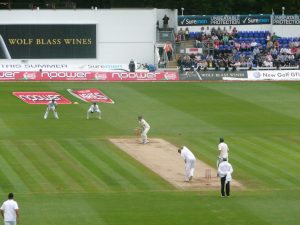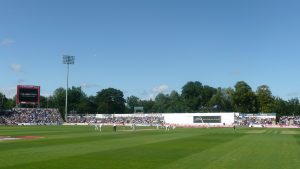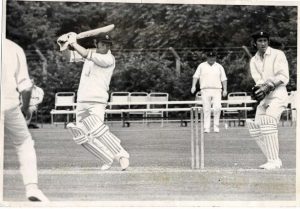With next year’s Cricket World Cup fast approaching, we take a look into the history of the SWALEC Stadium, the only Welsh ground in the fixture list, that will celebrate 20 years of International Cricket by hosting four of the trophy’s fixtures. Here are five things you didn’t know about Glamorgan’s home stadium.
1. It hasn’t always been a famous cricketing home
Where you would now hear leather striking willow, you would once hear electric guitars and dulcet vocal tones. Until Glamorgan CC made the SWALEC (then Sophia Gardens) its home in 1968, the gardens were used for an entirely different purpose. Hosting all manner of events from Tom Jones concerts to Commonwealth wrestling in 1958, it’s fair to say that this pocket of the city has enjoyed some variety throughout its history.

2. It had to wait so long for its first test match
There are nine active grounds in the UK that host Test cricket. None of these had a longer wait between their first One-Day International and their first Test Match than the SWALEC. Hosting Australia and New Zealand for their World Cup tie in 1999, the ground would have to wait a full decade before the pinnacle of the sport would make its first appearance there, hosting the opening fixture in the 2009 Ashes series.

3. It owes a debt to the water, and not just because of the weather
The lushness of the ground’s outfield is not something that is owed entirely to the well established wet weather that Cardiff has to offer. In order to keep the grass that covers the SWALEC’s playing surface so green, the groundsmen employ seaweed due, in part, to its nutritional value.

4. It’s impossible, no matter how hard you try, to blow the roof off it
Cardiff is home to many great entertainment venues and sporting stadiums. However, the SWALEC can claim to be unique in that it is the only arena to lack a roof. If Centre Court at Wimbledon has one, why not us?!

5. Getting runs here doesn’t mean international success
Ok, so this isn’t necessarily about the ground itself, but what the heck. It’s a little-known fact that Glamorgan CC’s top run-scorer or all time is a man called Alan Jones. Over the course of twenty-six seasons at the club, Jones amassed a staggering 36,409 runs, including 56 centuries. This also sees him as the holder of a slightly less-fortunate record in that he is the highest first-class run scorer never to have played an actual Test Match.

